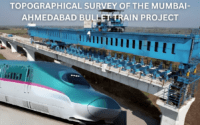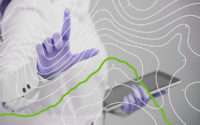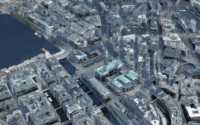Role of Global Positioning System (GPS) / Global Navigation Satellite System (GNSS) in Precision Farming
Role of Global Positioning System (GPS) / Global Navigation Satellite System (GNSS) in Precision Farming
Precision farming is an advanced approach of farming where inputs like manure, seeds, watering, weeding etc are utilised in precise amounts to get increased average yields, compared to traditional cultivation techniques.
Precision farming uses Drones and satellite technology which allows real-time management of crops and fields. It helps to monitor and reduce the environmental impact of farming.
In the current scenario of competition, Accuracy cultivating is an important aspect of farming. It includes estimation of harvest yields by doing various kinds of mapping. These maps can be combined with soil richness test results and other data or could be integrated with SAP to produce remedies which can naturally control the rate at which information sources are applied to a field on a site explicit premise.
21 Uses of GPS, Satellite and Drones in Precision Mapping :
- Weed location: Drone Mapping techniques could be used to identify out weed patches in vast areas of lands. Weed usually hinders the effective growth of a crop and hampers the eventual yields over a given period of time.
- Accurate planting: Using Drones for planting seedpods of given crop, it reduces time and efficiency. This process is known as Aerial Seeding. . In this technique, each seed has specific spacing and depth required depending on the soil type. Using Drones GPS, it is easier to tell what spacing a given seed requires and to what depth the seed should be planted in order to return maximum yields.
- Contour mapping: In cases where the land is irregular, Drones has been very useful in determining the contours or profile within the specific locality. This is because some crops may not do well in contoured lands while others may thrive in these lands.
- Identification of swamps and other water logged areas: Drones with multispectral sensors can be used to identify swampy areas and waterlogged areas that may not be ideal for certain types of crops. This helps in determining the suitability of these types of lands for certain crops and their non-suitability for other types of crops.
- Plantation mapping: Drones and Satellite can help in creating a map of a plantation and establishing the crop yields in a given plantation.
- Meteorological mapping such as climatic patterns: Drones plays an important role in mapping out some climatic conditions which may determine the type of crop that can grow in a given region.
- Identification of irrigated crops: Mapping by Satellite and Drones can also be used to identify areas where there are crops that have been irrigated and those that have not been irrigated. This helps in creating a profile between irrigated crops and non-irrigated crops to help in making comparisons.
- Field mapping: Satellite Mapping gives an exact estimate of the field that is being prepared for farming. Through this, experts can tell what part of the field will be used for farming activities and what area will be used for other non-farming related activities.
- Crop scouting: Drones gives an exact mapping of an area helping when scouting for crops that are grown in a particular area. Through this, experts are able to tell the nature and type of crops that thrive within a given locality and help in improving the quality of that crop.
- Yield mapping: After a crop has been planted and is ready for harvesting, GPS can be used to make an estimation of the yield of a given farmland. This can be achieved through aerial mapping where experts can tell the quantity of a yield based on the area covered by the crop. Atom Aviation does various kinds of mapping for precision agriculture in India
- Harvesting: Drones plays an important role in the determination of what area of a farm is ready to be harvested and how the harvesting will take place. The Drones will also give an estimate of the size of the area being harvested and the expected returns from the area.
Summary
Drones and Satellite plays a huge role for precision farming. This is the latest technique for increasing the yield of farms and gaining over your competition. Various sensors like RGB or multispectral sensors are useful insight data which helps in taking the timely decision to increase the crops yields.



